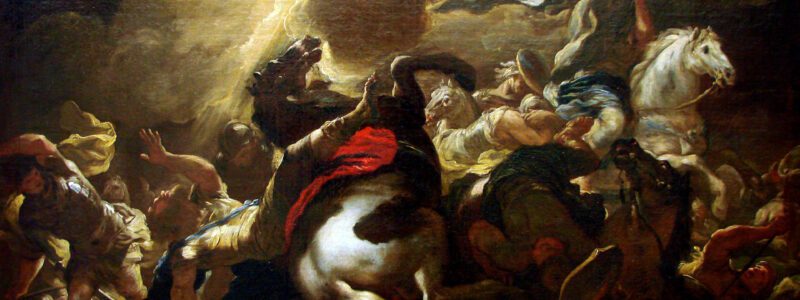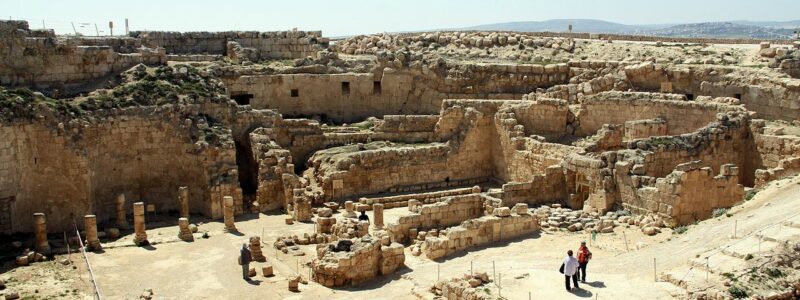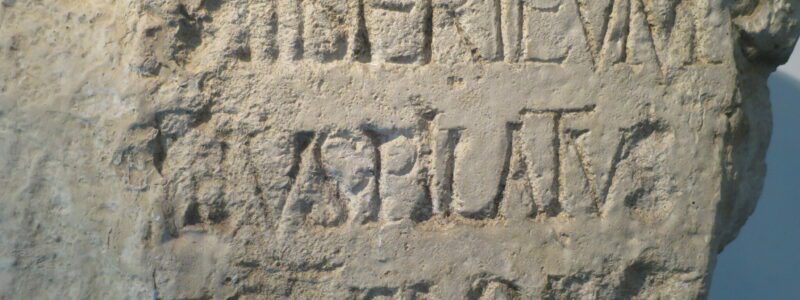Date of the Crucifixion

Calendar
The exact date of the Crucifixion has been debated for many years, and even today, many theologians get it wrong. That is a bold statement, to be sure, but it is one that I am willing to back up.
We now have many more resources to establish the date of the Crucifixion than ever before. We can attack the problem from multiple directions, including the various eclipses that occurred over Jerusalem during the time in question, the year of Paul’s conversion, the date various Roman Emperors were in charge, recollections from the Church Fathers as to the exact date, consideration of ancient history predicting the date, and Daniel’s famous 70-week prophecy, and astronomy all point to the same date.
I will be relying upon an older article in Tyndale Bulletin in 1992, but more recent research has further established this date as the most likely possibility. We will attack this problem primarily through two approaches; first, a process of elimination showing how every year but one is incompatible with the evidence available, and second, astronomical data which positively identifies a particular date.
In short, both of these approaches yield the same date: April 3, 33 AD.
The date of the Crucifixion is very relevant to the historicity of the Gospels and particularly relevant to the events surrounding the life of Christ. Recent scholarship of extra-Biblical sources is critical of the Christian message to help establish this important date.
If we can establish this date with any certainty, it lends credence to all the events surrounding the death of Christ – including the Resurrection.
Biblical Evidence of Date of the Crucifixion
The hunt begins with the acknowledgment of three pieces of data that help to date the Crucifixion:
- the reign of Pontius Pilate, who was procurator of Judea from 26 to 36 AD. This means the death of Christ has to be contained within this time interval. This is confirmed by the Roman historian Tacitus, Annals 15:44.
- All four gospels agree that Christ died shortly before the beginning of the Jewish High Sabbath; this means he died before nightfall (when the Sabbath begins since the Jewish day begins at sunset) on a Friday. Additionally, the earliest writings from the Church fathers all explicitly state that the date of the Crucifixion was on a Friday. This is important because many theologians have proposed the Last Supper and the Crucifixion much have occurred earlier so that Christ could be in the grave for three days and three nights. This objection is addressed in another post.
- All three gospels declare the Crucifixion occurred at the time of the Passover.
Timing of the Crucifixion. The anti-Nicene Church Fathers (those who wrote from 100 – 330 AD) were arguably the best to document the Crucifixion date. Some of these Fathers actually knew John the Apostle, who was personally at the Crucifixion.
These Church Fathers universally held that Christ rose from the dead on a Sunday and worshiped on Sunday, “The Lord’s Day.” They also testify to the institution of the Last Supper on a Thursday, and they all state Christ was crucified on a Friday. They also noted that Christ was buried (in the heart of the earth) for three days and three nights. This follows ancient Jewish customs that his time on the earth would span three days (Friday, Saturday, and Sunday). Justin Martyr writing in about 150 AD, testifies to a Sunday worship service and a Friday crucifixion,
But Sunday is the day on which we all hold our common assembly, because it is the first day on which God, having wrought a change in the darkness and matter, made the world; and Jesus Christ our Savior on the same day rose from the dead. For He was crucified on the day before that of Saturn (Saturday); and on the day after that of Saturn, which is the day of the Sun, having appeared to His apostles and disciples … (First Apology 67).
The Didache was instructional material for new Christians in the ancient Church and was written around 70 – 90 AD. It also mentions Sunday worship and fasting on Fridays (likely connected to Jesus’ crucifixion that day),
Let not your fasts be with the hypocrites … but fast on the fourth day and the Preparation (Friday). But every Lord’s day gather yourselves together, and break bread, and give thanksgiving after having confessed your transgressions, that your sacrifice may be pure.
Virtually every ancient Church Father who has written on the subject agrees with the traditional dating of a Thursday Last Super, Friday Crucifixion, and Sunday Resurrection. These Fathers include Ignatius (105 Ad), Barnabas (120), Clement of Alexandria (195 AD), and many others.

Glass of wine
Timing of the Last Supper. The time of the Passover is explicitly determined in Scripture; the Passover meal has to begin at sunset that evening at the start of Nisan 15 with the date of the actual Crucifixion occurring on the previous day (Nisan 14). The problem with this interpretation is that the Last Supper must have occurred the night before and was therefore not at the time of the conventional Passover meal.
Supporters of this interpretation suggest that Christ knowing of his imminent arrest, held an early Passover meal. This explanation is supported by the Synoptic gospels, which mention no lamb being slain and roasted for the last supper. But it is also possible that John MacArthur’s suggestion concerning the difference in Passover observation in ancient Israel between northern Israel (Galilee) and southern Israel (Jerusalem).
The chronological reckoning between John’s gospel and the synoptic presents a challenge, especially in relation to the time of the Last Supper. While the synoptic portray the disciples and the Lord at the Last Supper as eating the Passover meal on Thursday evening (Nisan 14) and Jesus being crucified on Friday, John’s gospel states that the Jews did not enter into the Praetorium “lest they should be defiled, but that they might eat the Passover”. So, the disciples had eaten the Passover on Thursday evening but the Jews did not., In fact, John (19:14) states that Jesus’ trial and crucifixion were on the day of Preparation for the Passover and not after the eating of the Passover, so that with the trial and crucifixion on Friday, Christ was actually sacrificed at the same time the Passover lambs were being slain (19:14). The question is, “Why did the disciples eat the Passover meal on Thursday?”
The answer lies in a difference among the Jews in the way they reckoned the beginning and end of days. From Josephus, the Mishna, and other ancient Jewish sources we learn that the Jews in northern Palestine calculated days from sunrise to sunrise. That area included the region of Galilee, where Jesus and all the disciples, except Judas, had grown up. Apparently, most, if not all, of the Pharisees used that system of reckoning. But Jews in the southern part, which centered in Jerusalem, calculated days from sunset to sunset. Because all the priests necessarily lived in or near Jerusalem, as did most of the Sadducees, those groups followed the southern scheme.
That variation doubtlessly caused confusion at times, but it also had some practical benefits. During Passover time, for instance, it allowed for the feast to be celebrated legitimately on two adjoining days, thereby permitting the temple sacrifices to be made over a total period of four hours rather than two. That separation of days may also have had the effect of reducing both regional and religious clashes between the two groups.
On that basis, the seeming contradictions in the gospel accounts are easily explained. Being Galileans, Jesus and the disciples considered Passover day to have started at sunrise on Thursday and to end at sunrise on Friday. The Jewish leaders who arrested and tried Jesus, being mostly priests and Sadducees, considered Passover day to begin at sunset on Thursday and end at sunset on Friday. By that variation, predetermined by God’s sovereign provision, Jesus could thereby legitimately celebrate the last Passover meal with His disciples and yet still be sacrificed on Passover day.
This solution explains how the Jews could celebrate the Passover meal on two different, successive days depending on which portion of Israel they originated.
The First Century Jewish Calendar
The Jewish calendar is a lunar one based upon when the New Moon occurred. The New Moon is the opposite of a Full Moon and is defined in astronomy as when the moon can not be seen because it is between the earth and the sun. (It does not necessarily cover the sun; this is a much more rare event called a solar eclipse). Today, New Moons are calculated far in advance since we have a mathematical understanding of the moon’s movement and know exactly where it will be thousands of years in the past or the future. Unfortunately, the ancient Jewish priests tasked with determining when a month began did not have that luxury of knowledge.
Instead, the ancient Jewish priests had to watch the sky for the thin crescent of the Moon, which occurred shortly after sunset. Therefore, the Jewish day began in the evening, and the first day of the month was determined by when the thinnest of crescent could be observed. Consecutive appearances of the thin crescent moon occur every 29 or 30 days. This, of course, means that a given Jewish month might be 29 or 30 days in length.
The first visibility of the thin crescent moon can be calculated for the years Pontius Pilate was the ruler in Judea. We can then add fourteen days to this date to get the date of Nissan 14 – the day of the Passover. There are only two Passovers during Pilate’s reign that occurred on a Friday; the one in 30 AD and the other in 33 AD. Interestingly, twelve months during the year were approximately 354 days – or eleven days less than the year’s length of 365 days. To make up the difference and keep the lunar months at approximately the same place in the solar year, the Jews added the 13th month when needed.
The Sanhedrin decided the timing of the addition of the 13th month. While there were multiple criteria, the most important was that the Passover must occur during the Spring after the vernal equinox.
Possible Dates for the Crucifixion Using These Criteria
There are only two dates during Pilate’s reign that seem to be possible candidates for the Passover. But, again, the Passover must occur on a Friday (the day of preparation before the Sabbath) as detailed in Scripture. These two possible dates are April 7, 30 AD, and April 3, 33 AD.
The Clue Concerning John the Baptist
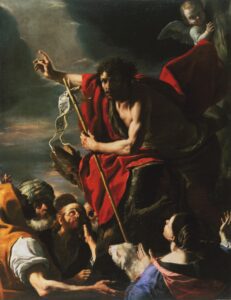
John the Baptist preaching in the wilderness – By Mattia Preti – The AMICA Library, Public Domain, Link
Luke was a physician and trained in careful observation and dutiful recording of evidence. Luke writes in Luke 3:1-2 that John the Baptist began his ministry during the 15th year of Tiberius Caesar. Therefore, Christ’s ministry must occur later than the beginning of John’s since John baptized Christ.
Luke was writing to a Roman official named Theophilus and would probably have calculated the 15th year of Tiberius’ reign using the official Roman accession year calendar. The Roman historian Tacitus used the accession year system to set the ruling dates of the Emperors. This system starts the official year on January 1 rather than the year in which they took power. Thus, this system would set the 15th year of Tiberius’ reign on January 1, 29 AD.
The commencement of John’s ministry provides the final clue needed to establish the date of Christ’s ministry. As noted above, the earliest date for the beginning of John’s ministry would be January 1, 29 AD. Since John’s gospel lists three different Passovers occurring during Christ’s ministry (including the Passover of the Crucifixion), the one candidate of 30 AD can not be correct. This leaves the only logical candidate for the Crucifixion date as being 33 AD.
The Clue Concerning Sejanus
Rome, during the time of Pilate, was interested in keeping the peace in Judea. They knew rebellious and troublesome Jewish people filled the area with troublesome, rebellious Jewish people who might go off on a revolt at any time with the proper motivation. The Romans were not about to give the Jews motivation for a revolt that would be expensive to put down.
Sejanus is an interesting character who rose to considerable power in ancient Rome alongside Emperor Tiberius. We will not concern ourselves with all the murderous intrigue surrounding Sejanur at this time only to cover how it relates to our story. The Emperor decided the government’s pressure was too much and essentially retired to the Isle of Capris off the coast of Italy. While there, he was also isolated from much of the drama surrounding the throne.
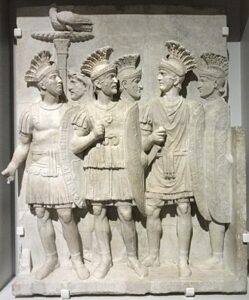
The Praetorian Guard – By Historien spécialiste du bassin minier du Nord-Pas-de-Calais JÄNNICK Jérémy / Wikimedia Commons & Louvre-Lens, GFDL 1.2, Link
The Praetorian Guard was an elite unit of the Roman army that the Roman Senate charged with keeping the Emperor and his family safe. It was founded by Augustus in 27 BC, possibly with the recent death of Julius Caesar in his mind. Sejanus became commander of the Praetorians and helped shape the guard into a powerful too of centralized government. Sejanus further assumed complete control of the guard and, in so doing, posed a challenge to the Emperor himself.
With the Emperor out of the way on a remote island, Sejanus decided to consolidate power further and eliminate opposition. He began a series of purge trials of wealthy senators resulting in their “removal” from power. In addition, he established networks of spies and informants who would report to him any suggestion is disloyalty among the Roman leadership. Any disloyalty resulted in false charges of treason resulting in swift execution.
With most of his opposition neutralized, Sejanus assumed total power. Historian Cassius Dio wrote,
Sejanus was so great a person by reason both of his excessive haughtiness and of his vast power, that, to put it briefly, he himself seemed to be the emperor and Tiberius a kind of island potentate, inasmuch as the latter spent his time on the island of Caprese.
Things went along well for Sejanus for many years. He amassed power, controlled his own military contingent in the Pretorian Guards, and slowly eliminated his opponents while replacing them with his own people.
Then things totally fell apart for Sejanus.
At the end of 31 AD, he was arrested and summarily executed by strangulation, with this body unceremoniously thrown down the Gemonian stairs. Josephus reports that Antonia – the sister-in-law of Tiberias – alerted him to the growing threat Sejanus posed by a letter delivered to the Island of Capri. A return letter from Tiberius ordered the immediate execution of Sejanus without a trial.
Riots then gripped Rome with mobs hunting for anybody who Tiberias thought might be linked to Sejanus. Tiberius also prosecuted all who could even remotely be attached to Sejanus or even courted his friendship. This political turmoil continued until Tiberius died in 37 AD, after which Caligula succeeded him.
Sejanus, Pontius Pilate, and Date of the Crucifixion
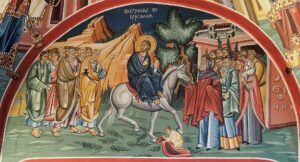
By Petar Milošević – Own work;, CC BY-SA 4.0, Link
Sejanus had appointed Pontius Pilate to be procurator of Judea and was certainly aware of his friend’s turmoil. It has puzzled historians why Pilate – a vengeful and feared leader – would seem weak and subject to the pressure of the Jews whom he despised. Sejanus was a noted anti-Semite and enemy of the Jews in Palestine.
This did not escape the attention of Tiberius, who ordered that all Jews should be treated well by every Roman governor. The Jewish leaders in Jerusalem took advantage of the weak position of Pilate when they told him,
If you let this Man go, you are not Caesar’s friend. Whoever makes himself a king speaks against Caesar” (John 19:12)
This now makes complete sense; the Jewish leaders had been plotting to get rid of Jesus for many months, which offered them the perfect opportunity. The people had declared him their King only a few days earlier when he came into Jerusalem on the back of a donkey during Palm Sunday. The Jewish rulers were prodding Pilate into finding Christ guilty of treason since he claimed to be King. Pilate knew full well of anybody’s ongoing executions even remotely connected to Sejanus, and he was likely afraid for his life. Nevertheless, the Gospels report he capitulated to the wishes of the Jewish leaders.
The Clue of the Moon Turned to Red
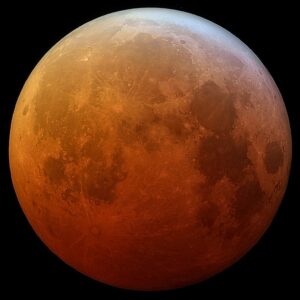
Lunar eclipse or a “Blood Moon.”
One of the more interesting facets of the Crucifixion is that the moon turned red. On Pentecost, the Scriptures indicate Peter stood up and addressed the Jewish crowd concerning the day’s events. Many in the crowd were likely very observant Jews and knew their Old Testament very well. Since most Jews were unable to read, they learned their Scripture through memorization. Peter drew from this knowledge when he quoted from the prophet Joel,
In the last days, God says, “I will pour out my Spirit on all people … I will show wonders in the heavens above … The sun will be turned to darkness and the moon to blood before the great and glorious day of the Lord shall come. And everyone who called on the name of the Lord shall be saved.”
Many commentaries say this speech makes most sense if assumed the words refer to the momentous events which had just happened in Jerusalem – the Crucifixion.
“The last days” began after Christ’s first coming and the outpouring of the Spirit during the time of the Pentecost. “That great and glorious day” refers to the resurrection since “everyone who called on the name of the Lord shall be saved.” “The sun will be turned to darkness” refers to the three hours of darkness during the Crucifixion (Matthew 27:45).
Since the darkened sun occurred during the resurrection, the moon turned red that evening is reasonable to support it. The moon turning red at the time of the Crucifixion is also supported by the “Report of Pilate” – a New Testament apocryphal fragment which states,
Jesus was delivered to him by Herod, Archelaus, Philips, Annas, Caiaphas, and all the people. At his Crucifixion the sun was darkened, the stars appeared, and in all the world people lighted lamps from the sixth hour until evening; the moon appeared like blood. (M.R. James, The Apocryphal New Testament (Oxford, Clarendon 1953) 91.
Further evidence that the moon turned red at the Crucifixion is provided by Cyril of Alexandria, the Patriarch of Alexandria, in 412 AD. He first states that there was darkness at the time of the Crucifixion and then goes on to say,
Something unusual occurred about the circular rotation of the moon so that it even seemed to be turned into blood.
He then notes that the Prophet Joel foretold such signs making him agree with what the Apostle Peter said four centuries previously.
In summary, both the apocryphal “Report of Pilate” and the words of Cyril provide secondary evidence that the moon turned red at about the same time as the Crucifixion. This should help to narrow down the choices and help substantiate the correct day.
A Blood Moon in History
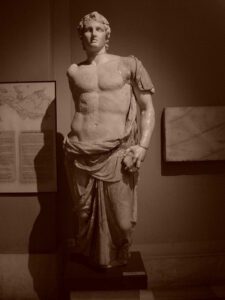
Alexander the Great has been associated with a lunar eclipse.
Imagine the dramatic events surrounding the Crucifixion. Pilate had ordered Christ to be crucified even though he asserted Christ was an innocent man. He was bowing to the will of the people during a time when his own political situation was threatened. Christ was then tortured and crucified, stripped naked of all his possessions and dignity, and died. There was darkness across the land accompanied by a great earthquake, But what was perhaps even more dramatic was what happened to the moon.
When the moon arose after sunset, it was, of course, a full moon; Passover always occurs at the time of the full moon. But this year, when the full moon rose that Crucifixion evening, it was blood red in full eclipse.
History provides many examples of a full moon in eclipse being called a “blood moon.” This expression can be traced back to at least 300 BC as a common historical description. Some of the more important lunar eclipses throughout history were compiled by F.K. Ginzel. Ancient historians described the moon during these occasions as a “blood moon,” which allows the exact date of the historical event to be determined. Three of these examples are,
- The lunar eclipse of September 20, 331 BC, which occurred just before when Alexander the Great crossed the Tigris right, was described by Quintus Curtius (History of Alexander 4:10:2) as “suffused with the color of red.”
- The lunar eclipse of August 31, 304 AD, which likely occurred at Bishop Felix’s martyrdom, was described in Acta Sanctorium (Acts of the Saints) as “when he was about to be martyred, the moon was turned to blood.”
- The lunar eclipse of Mach 2, 462 AD was described in the Hydatius Lemicus Chronicon as “On March 2 with the crowing of the cocks after the sun’s setting the full moon was turned to blood.”
In fact, there are so many lunar eclipses described as the “moon turned to blood” that the phrase appears to be almost trite.
There seems to be enough evidence that when Peter was describing the prophecy of Joel with the “moon turning to blood,” he was describing a lunar eclipse. F.F. Bruce notes regarding Peter’s Pentecost speech,
It was little more than seven weeks since the people in Jerusalem had indeed seen the sun turned into darkness during the early afternoon of the day of our Lord’s Crucifixion. And on the same afternoon, the paschal full moon may well have appeared blood-red in the sky in consequence of that preternatural gloom.” (Bruce, Commentary on the Book of the Acts).
The Clue of Lunar Eclipses Visible in Jerusalem
It seems very likely that Peter was describing a lunar eclipse that occurred during Christ’s Crucifixion. It then becomes interesting to see whether any lunar eclipses were visible in Jerusalem when Pilate was governor between 26 and 36 AD. It turns out that there was only one lunar eclipse at Passover visible from Jerusalem – and that is the one on Friday, April 3, 33 AD.
On that fateful day, the moon rose at about 6:20 PM – with about 20% of the disk appearing deeply red in color. Many lunar eclipses go largely unnoticed since they often occur when people are asleep. However, Jerusalem would have noticed this particular eclipse through Israel as everybody was awake during the early hours of the Passover as they enjoyed their Passover meal. In fact, the Jews on Passover Day would have been looking for both sunset and moonrise to know when to begin their Passover meal.
However, rather than seeing the usual bright full moon, they would have seen a blood moon with most of the moon in eclipse. The effect would have been theatrical. The crowd on the day of Pentecost would likely have a personal recollection of the moon “turning to blood” on the day of Passover.
Summary of Date of the Crucifixion
The Crucifixion date seems to be well established as occurring on April 3, 33 AD. This date is most in line with the birth of Christ, which occurred approximately 33 years previously.
Luke tells us that Christ was about 30 years old when he began his ministry (luke 3:23). Christ then began his ministry in Galilee shortly after his 30th birthday. So why did he wait so long?
By custom, rabbis were not regarded as mature enough to begin their public ministry until they were 30 years of age. Mosaic Law suggested this custom, which stipulated that priests could not begin their public ministry until they were 30 years old (Numbers 4:2-3). Numbers 8:24 notes that Levites who were not direct descendants of Aaron could begin their ministry at age 25. However, Jewish teachers have interpreted this to mean that between age 25 and 30, Levites served as assistance, “and only at age 30 [were] counted as full-fledged members of the workforce.” (The Jewish Study Bible).
According to the church fathers Origen (AD 185 – 254) and Jerome (342 – 430), no Jew was allowed to read the Song of Solomon until they were 30 years old. This is because the ancient Jews regarded the age of thirty when a rabbi would reach sufficient spiritual maturity to teach and lead others. The evidence of Scriptures is that Jesus was a bona fide rabbi who taught freely in the synagogues and the Temple of Jerusalem (John 16:19-20). Furthermore, Jesus was called “rabbi” nine times in Matthew, Mark, and Luke.
Christ was likely thirty years old at the start of his ministry in 29 AD and taught for about three years until his Crucifixion. This means Christ must have been born in 2 BC, remembering there is no year 0. This would agree well with the modern understanding that Herod likely died in 1 BC (rather than 4 BC), with Christ born in 2 BC. Using this logic, Christ would have been 30 years old in 29 AD – just in time for him to be baptized by John the Baptist and start his ministry.

